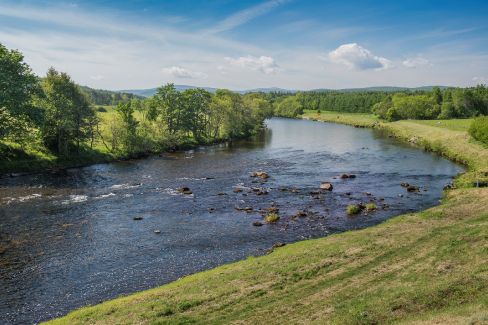Still Going Strong, The BiColour Nymph 10 Years On.
Not much good has come from the decline of British industry. One of the great benefits is that many of the rivers which were once treated as sewers have recovered. Yorkshire’s River Calder is one. The post industrial landscape isn’t the most picturesque place to fish but it was local and cheap. (Fishing rights are mostly privately owned in the UK so you have to pay to fish).
Trout and grayling are now prolific where, not so long ago, there were none. Better yet I could go and catch them for just a few pounds a year. I spent a lot of time on that river. Caught some nice fish and generally had a great time of it.
Except, that nymphs just didn’t seem to work properly. I picked up the odd fish on them, but nothing like I would usually associate with fishing nymphs. Turning stones I found many nymphs of all the species I expected. What was different about these nymphs was the dorsal side. Most nymphs seem to have buff to pale yellow under sides. These almost all had bright yellow under sides.
This may have been a result of the past pollution of the river, or just a regional variation. I’m not enough of a naturalist to know. I can see when something is different, and know enough to look for this as a solution.
Often I have described imitative fly fishing as seeing an insect, tying something that looks like it, and fishing it so it behaves like the natural. Knowing the Latin name of the insect adds nothing to your ability to do this.
What I needed was a nymph that mimicked this colour differential. Knowledge can and does often act as blinkers. I know this from another interest of mine; performing close up magic. It is often easier to fool another magician than it is to fool a lay person. In the same way I grabbed at the first solution that came to my fly tiers brain. Weave the fly.
The bed of the Calder is littered as much with dressed stone as natural rock. My supply of woven nymphs soon decorated these rocks. Not to mention the river is quite overgrown. A goodly number ended up in inaccessible branches. Woven nymphs are time consuming to tie. Soon I was thinking twice before casting into tight corners.
A re think became necessary. How can I incorporate the dorsal ventral colour split into a fly that is simple to tie? That puzzled me for 3 or four years. I played about with different materials at odd times but the answer evaded me. In the mean time I got plenty of practice tying woven flies.
One day I was playing around with a quick way I had found to tie Czech nymphs, which involved tying in the shell back forward of the eye, and pulling it back over the fly to be held in place with the ribbing wire.
That’s when it hit me. I could use this method to tie nymphs for the Calder. Ten minutes later the first BiColour Nymph was ready to fish.
The BiColour nymph is not so much a single pattern as a way of tying pheasant tail nymphs with a colour differential along the body. Here is the original.
This is tie on a size 12 standard wet fly hook. You should tie them on whatever hook gives you the right size nymph for where you fish.
Thread: Any fine thread. Colour to match body.
Rib: Copper wire in any colour you like. Size to suit the hook you are using.
Body: Colour extracted and dyed pheasant tail, in this example sunburst
Back: Natural or dark dyed pheasant tail
[Tying instructions are with the pictures]
You will have realised that this is un weighted and does not have any legs. You can add weight in the form of wire or a bead if you like. Legs may also be added, but I subscribe to Frank Sawyer’s opinion that they are not an important feature on a drifting nymph. You will find the tying of a weighted legged version here http://www.crackaigflies.co.uk/bicoloursbs.html
Fishing the BiColour Nymph.
The old skill of fishing the upstream nymph does not seem popular today. Maybe people just don’t want to perceiver enough to learn it. It is, though, as effective as it has always been. That is how I first fished it. And yes it did crack the problem of the River Calder. It has proved effective far and wide, it is as effective as any other PTN, often more so.
You can also fish it below a dry fly in what has become known as a “Klink and Dink” set up. On still waters it makes a great point fly for a team of three.
The variations are limitless once you have the basic techniques, I’m sure you will be able to twist it into something useful for your fishing.
Cheers,
Alan.






















